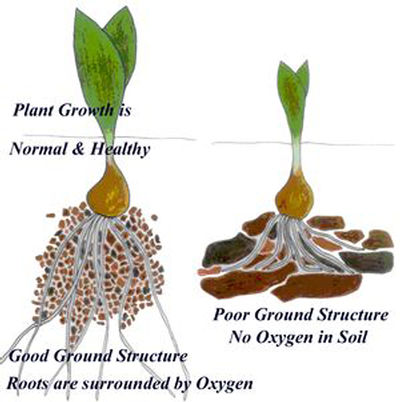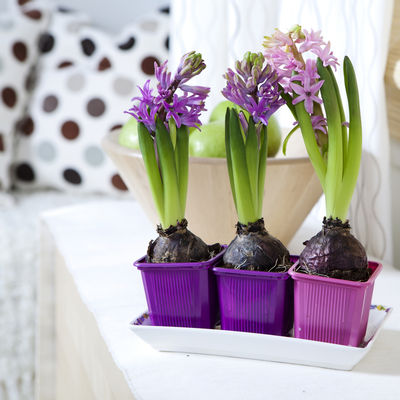Netherland Bulb Company
Known for producing Premium Holland Bulbs 1-800-78-TULIP
Planting Your bulbs
Getting Started
Storage of Bulbs Prior to Planting
- Directly upon arrival and prior to planting, store your bulbs in an outside air ventilated room at (60-70 degrees F) or (17-20 degrees C)
- Storing unplanted Hyacinth, Tete a Tete & Daffodil bulbs at lower temperature will increase the risk of mold, mildew, botrytis and penicillum
- If you receive your shipment of bulbs in card board boxes, open the boxes immediately for more ventilation
Potting
Soil
Plant bulbs in a well drained growing mix. The growing mix should be as follows:
- P.H. level between 5.5 – 6.5
- Low in soluable salts
- Should be moist not wet at planting time
- Leave enough room in pot to water them during the greenhouse forcing phase
Growing mix should contain the following:
- 20% clean top soil or sand * (VERY IMPORTANT TO AVOID BOTRYTIS) 60% peatmoss
- 20% Styrofoam or vermiculite for added drainage and to increase oxygen in the pot for better aeration on your tulip roots

The growing mix can greatly influence the quality of your tulip crop. A ph of 5.5 to 6.5 versus a ph of 6.5 to 7.0 will lessen the amount of roots in your pot (this is good) and will also fight of more bacteria for healthier roots. Should your ph be at the level of 7.0 bring it down to a less neutral level. The sand in your mix will naturally fight off bacteria and will increase the drainage and oxygen levels around the tulip roots; which is desirable.
Providing water
When planting
Do not over water after planting and then placing the pots in the cooler. You should self test the moisture level in your growing mix. The procedure is as follows: Take a hand full of growing mix and place it in the palm of your hand. Squeeze as hard as you can and if there is excessive water dropping out, your mix is too wet. You should get a couple drops of water out of the mix, and no more. Adjust your moisture level in the mix accordingly, because too much water will cause a shortage of oxygen leading to a weakening root system, and thus increasing the risk and susceptibility of Pythium. Rooting can then proceed quickly and satisfactorily.
Important to Note:
There is increased concern on tulip ROOT diseases. The disease in particular that we are referring to is called Botrytis Cinerea or more commonly referred to as “GREY MOLD”. This does not affect hyacinths or daffodils. Learn more about grey mold.

